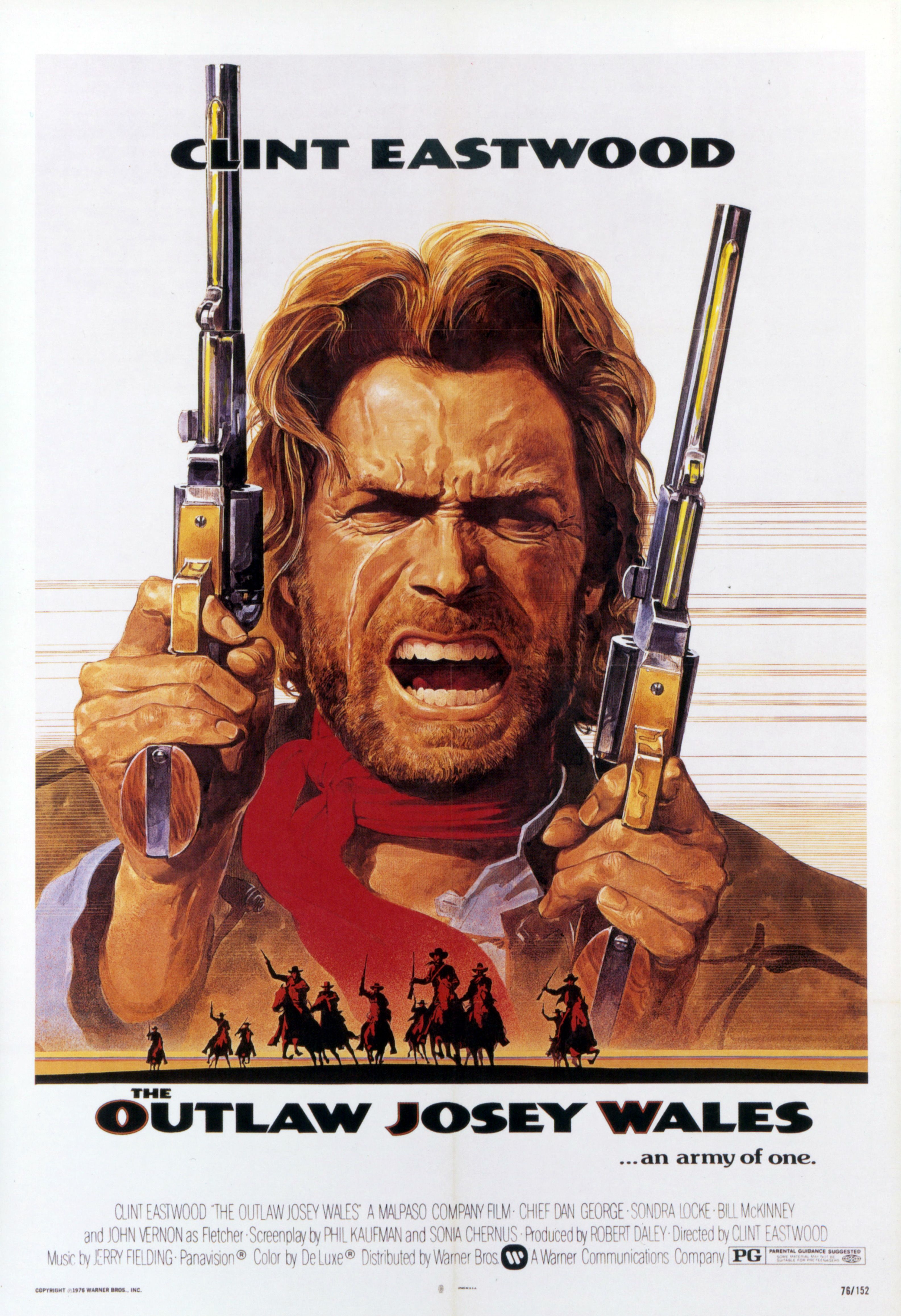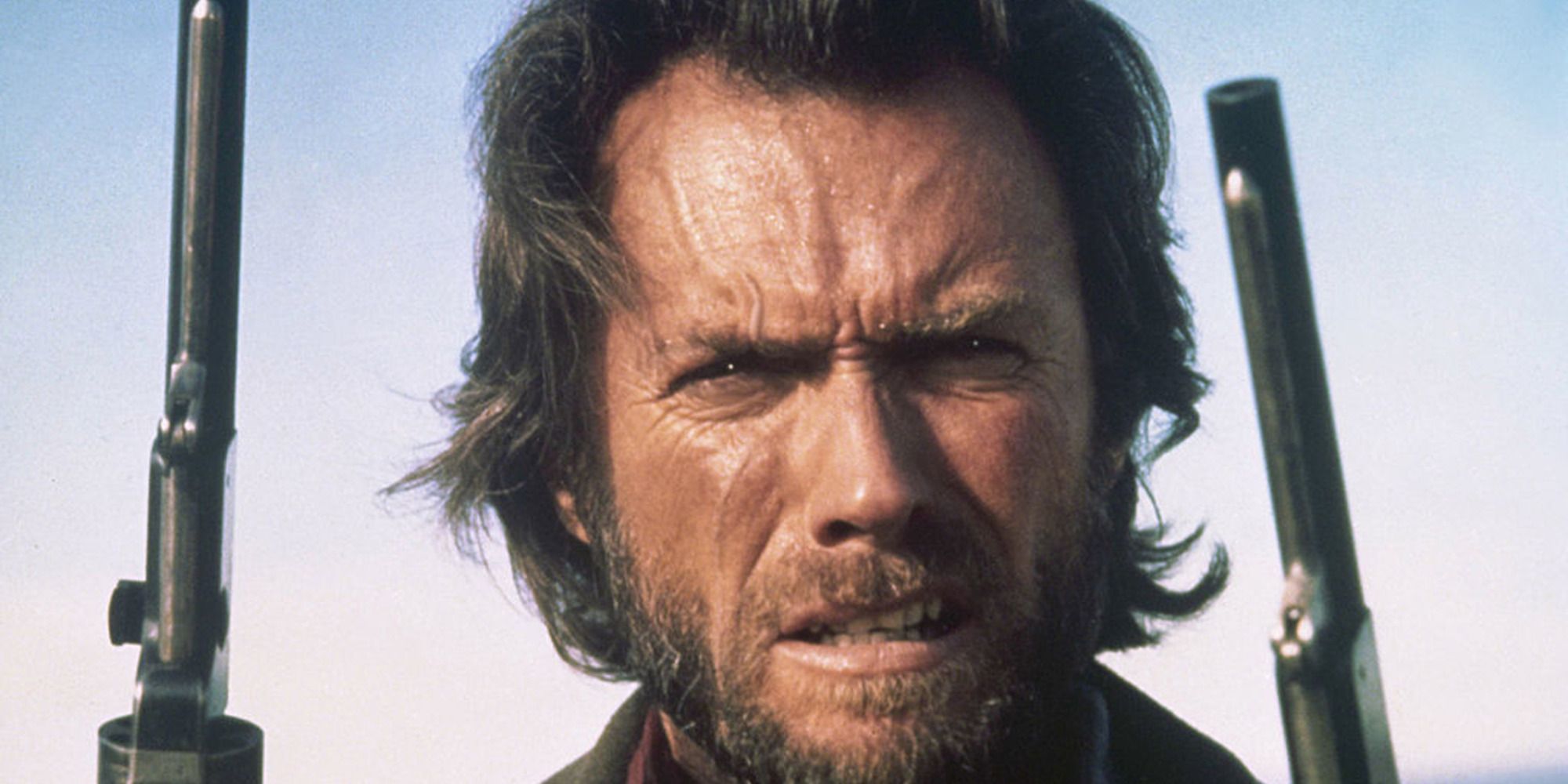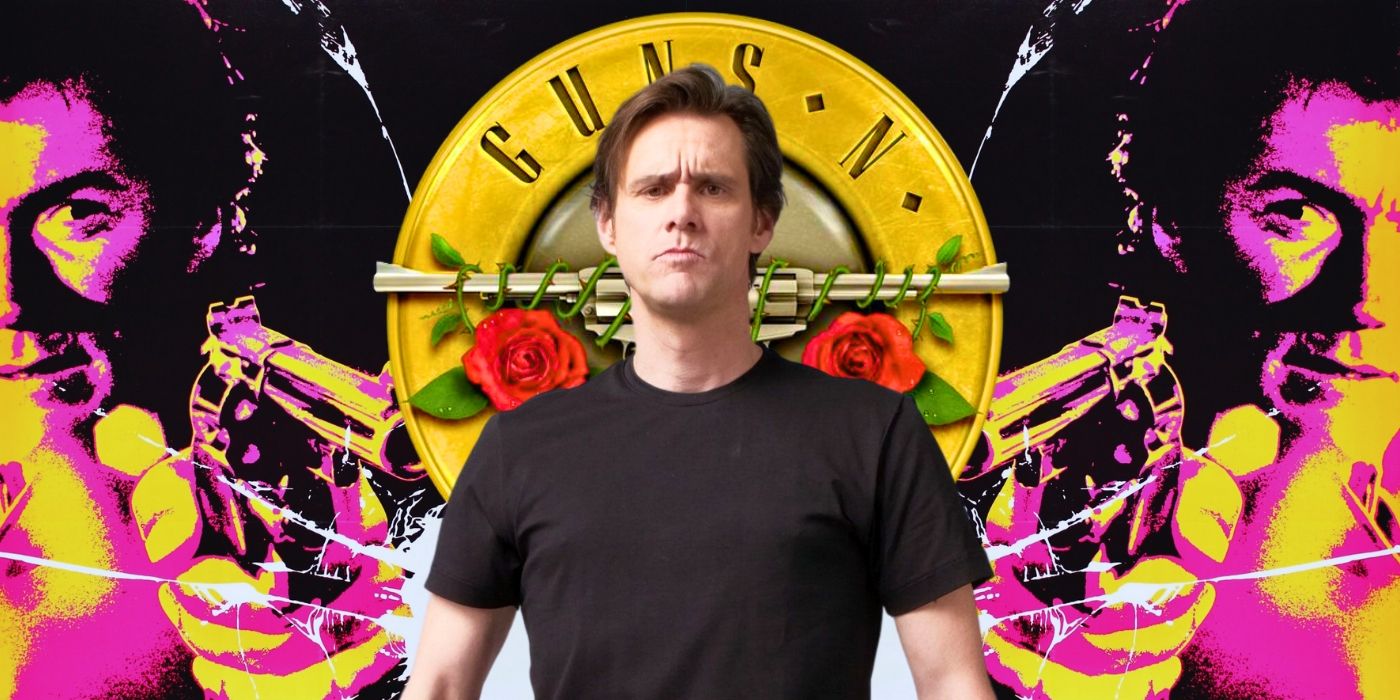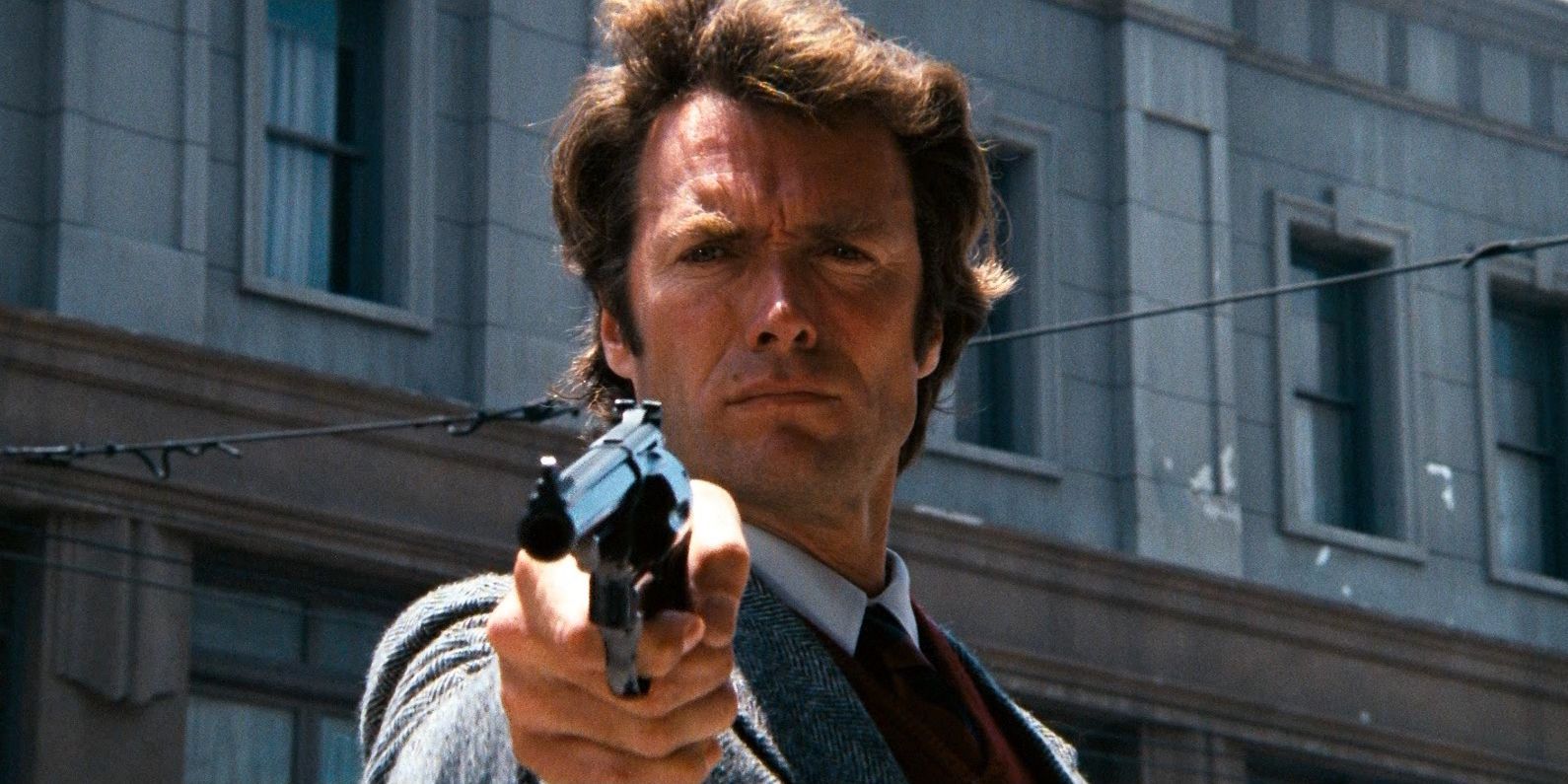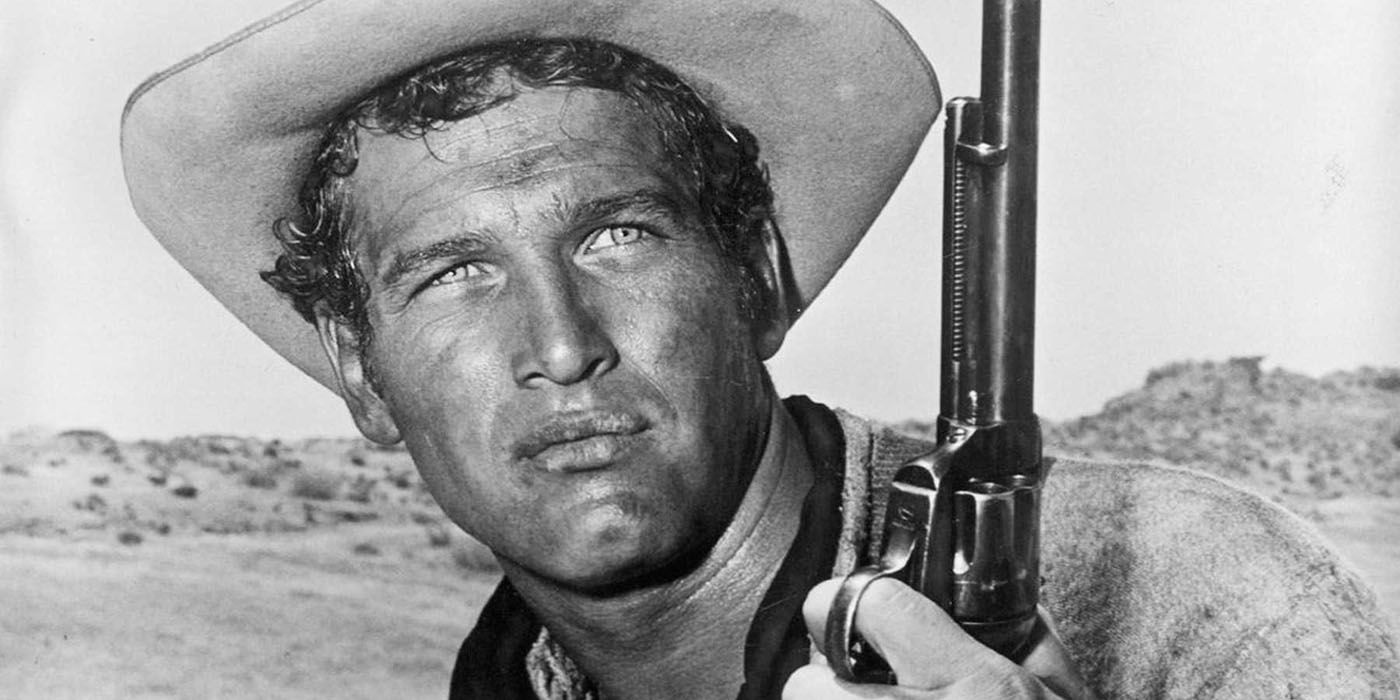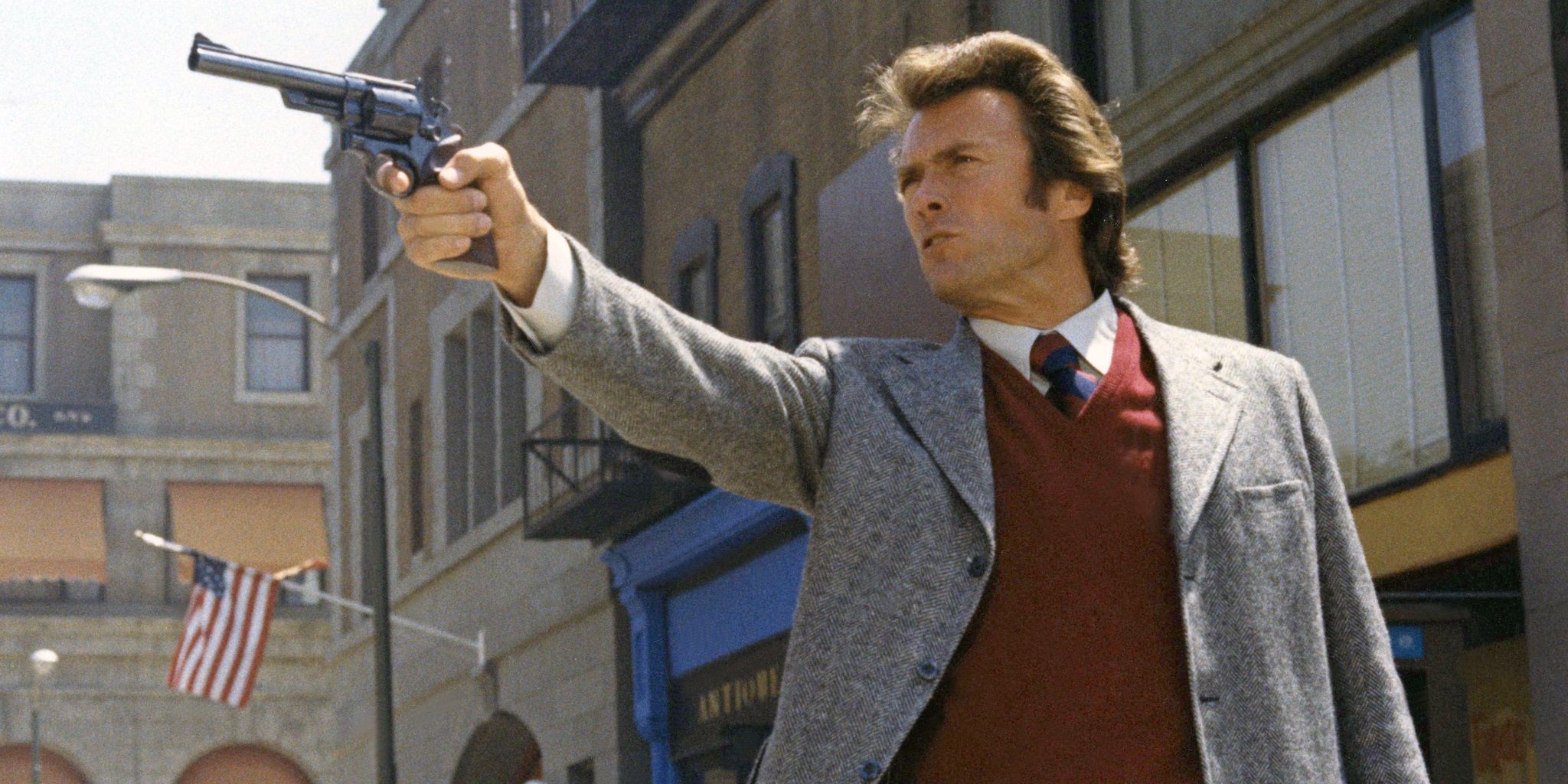Clint Eastwood
The Clint Eastwood Western That Doubles as an Anti-War Movie
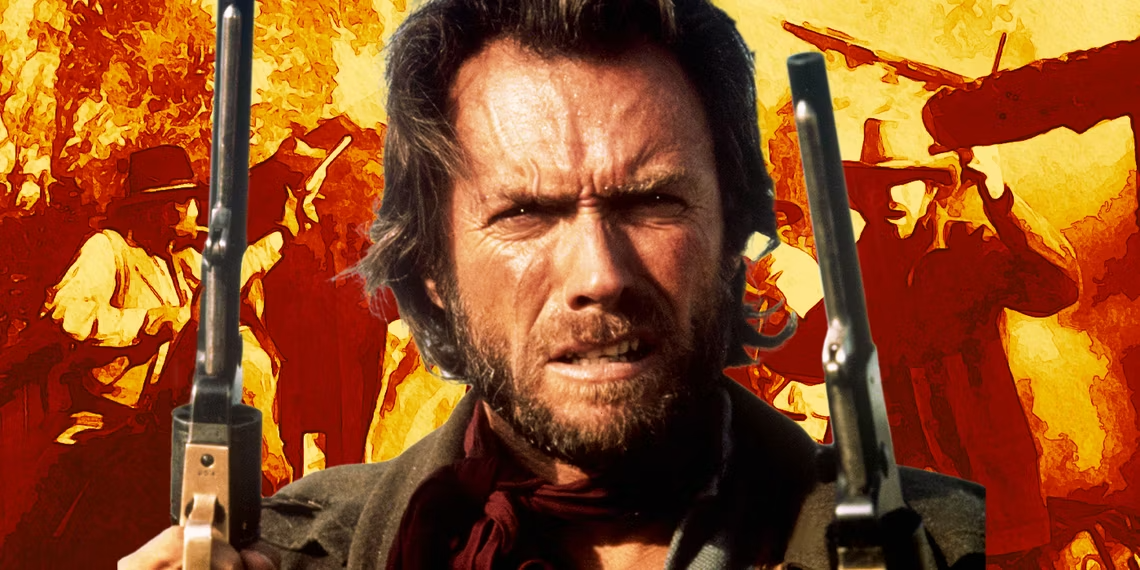
THE BIG PICTURE
Clint Eastwood’s The Outlaw Josey Wales is a Western film that delves into the harsh realities of violence and warfare.
Eastwood labels the film as an “anti-war” movie, highlighting the parallels between the narrative and the Vietnam War.
The film combines elements of vengeance and traditional warfare, ultimately showcasing the inevitability of violence and the impact it has on American society.

In the history of Hollywood, no figure was quite as reflective of their image, star persona, and stature in the industry as Clint Eastwood. While he is a tried and true action movie star, frequently playing gun-toting outlaws who defy the orders of society, Eastwood has aspired to deconstruct the archetypes of cops and cowboys on screen throughout his illustrious six-decade career as an actor and director. He is symbolic of seemingly contrasting tastes. He can seamlessly give audiences a satisfying thriller about revenge featuring copious amounts of gun fights, yet his most accomplished films confront the harsh underbelly of violence. With his 1976 Western The Outlaw Josey Wales, Eastwood examines violence in the context of America’s past and present relationship to warfare.
The Outlaw Josey Wales
Missouri farmer Josey Wales joins a Confederate guerrilla unit and winds up on the run from the Union soldiers who murdered his family.
Release DateJune 30, 1976
DirectorClint Eastwood
CastClint Eastwood , Chief Dan George , Sondra Locke , Bill McKinney , John Vernon , Paula Trueman
RatingPG
Runtime135 minutes
Main GenreWestern
GenresWestern
WritersForrest Carter , Philip Kaufman , Sonia Chernus
Tagline…an army of one.
What Is Clint Eastwood’s ‘The Outlaw Josey Wales’ About?
The Outlaw Josey Wales follows the titular Missouri farmer (Eastwood) who joins a Confederate guerrilla military unit after the slaying of his family by Union soldiers. Eventually, as he emerges a feared gunfighter, Wales becomes the target of a manhunt by the same Union soldiers and a gang of bounty hunters. On the surface, Josey Wales appeals to the cheap sensibilities of exploitation pictures.
The film, from its synopsis to its perspective, centered on the Confederacy during the Civil War, seems like trashy and troubling material that is beneath Eastwood. In the end, the film’s confrontation with transgressive topics and circumstances leaves an immeasurable impact on the final product, as Eastwood’s sobering commentary on the brutality and bleak inevitability of war is some of the star’s most resonant storytelling.
Clint Eastwood Interprets ‘The Outlaw Josey Wales’ as an Anti-War Film
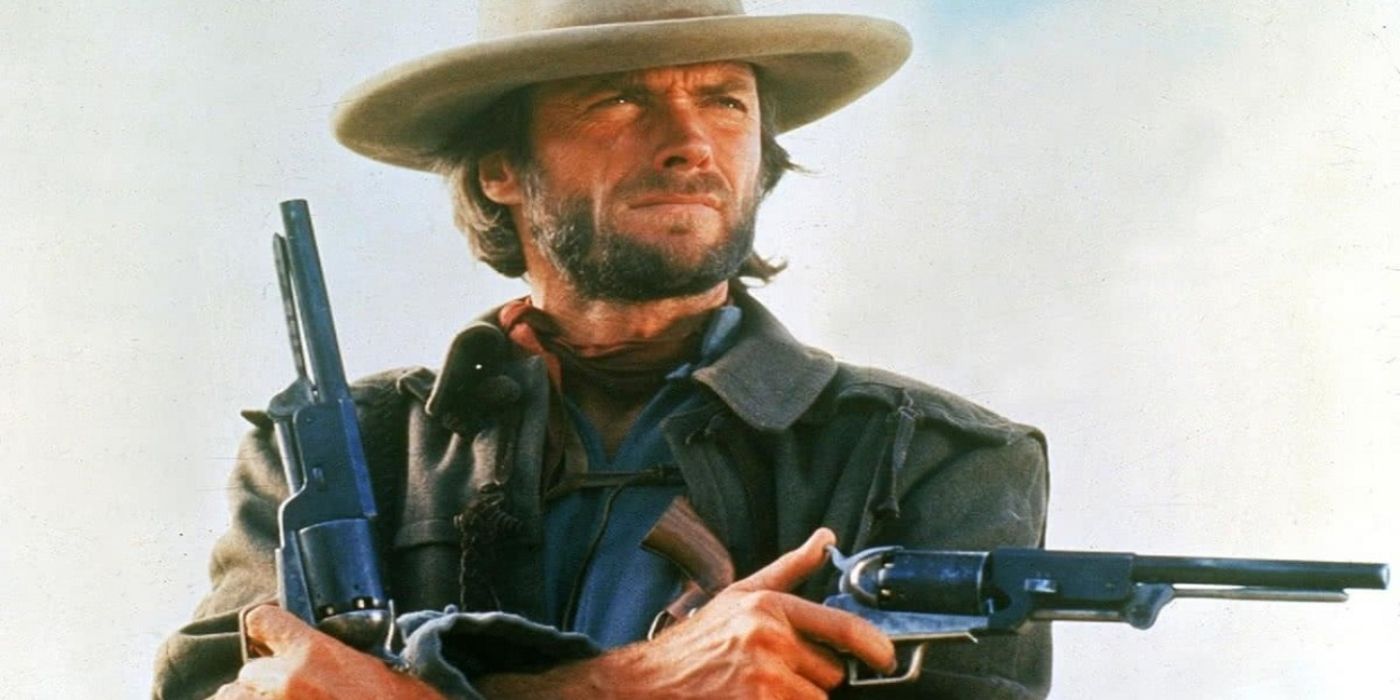
In a 2011 interview with The Wall Street Journal, in the lead-up to his upcoming biopic, J. Edgar, Eastwood opined on the ethics of law enforcement and reflected on his military experience in the Korean War. His sympathy towards law officials (from the real-life J. Edgar Hoover to Gene Hackman‘s Oscar-winning turn as “Little” Bill Daggett in Unforgiven) who seek proper justice but are derailed by an excess of chivalry is an insightful portrayal of his vast filmography. Ultimately, the subtext of The Outlaw Josey Wales crystallizes Eastwood’s belief that the nobility of justice is destined to be undermined by a warmonger complex that permeates American politics.
More so than any of his explicit war films, including Letters from Iwo Jima or American Sniper, Eastwood labeled Josey Wales as an “anti-war” film. “I saw the parallels to the modern day at that time. Everybody gets tired of it, but it never ends,” he said, comparing the film’s narrative to the contemporaneous turmoil ensuing during the Vietnam War. Eastwood identifies a solemn reality surrounding war’s existence, stating that “war is a horrible thing, but it’s also a unifier of countries.” According to the actor-director, civilization perversely coexists and sparks genuine camaraderie among people during these years of bloody havoc. Humans are also at their most creative, as evident by the mass development of advanced weapons and machinery. “That’s kind of a sad statement on mankind, if that’s what it takes,” he remarks.
Clint Eastwood’s Josey Wales Wants Revenge
Indeed, camaraderie is an essential fabric of the story of The Outlaw Josey Wales. Following the harrowing murder of his wife and young son, led by Captain Terrill (Bill McKinney), he sharpened his skills as a gunfighter. Along his journey of vengeance, he forms a brief alliance with a Confederate guerrilla army before their subsequent surrender and killing at the hands of the Union soldiers. Soon after, Wales forms a pact with an assortment of misfits, including a Cherokee man, Lone Watie (Chief Dan George), a Navajo woman, Little Moonlight (Geraldine Keams), an elderly woman from Kansas, Sarah Turner (Paula Trueman), and her granddaughter, Laura Lee (Sondra Locke, who developed a personal relationship with Eastwood). In the film’s early moments, immediately after his family is massacred and his home is destroyed, the Confederate army emerges in the background. A distraught Josey, at his lowest moment, is given a chance for payback. This feeling of worth and validation is the root of the film and its harsh commentary on how warfare captures the emotional vulnerability of Americans.
The core structure of The Outlaw Josey Wales calls for a lone outlaw to exact brutal revenge on anyone who walks in his path. However, the tribal complex involved in the conflict between the Union and Confederate armies and Native Americans versus their local oppressors draws Wales into the orbit of traditional warfare. What started as a primal streak of vengeance evolved into a series of battles and disputes between other gangs and Native tribes, including the Comancheros and the Comanche tribe, respectively. Wales’ companions that he encounters along the way are also subjected to his journey of retribution. The character’s personal stakes blend in with the greater machinations of tribal warfare. Despite being set in a familiar Western setting filled with vistas and horseback riding shootouts, Josey Wales takes on the likeness of a man-on-a-mission war epic, such as the Eastwood-starring World War II film, Where Eagles Dare.
Clint Eastwood’s ‘The Outlaw Josey Wales’ Is a Smartly Directed Western
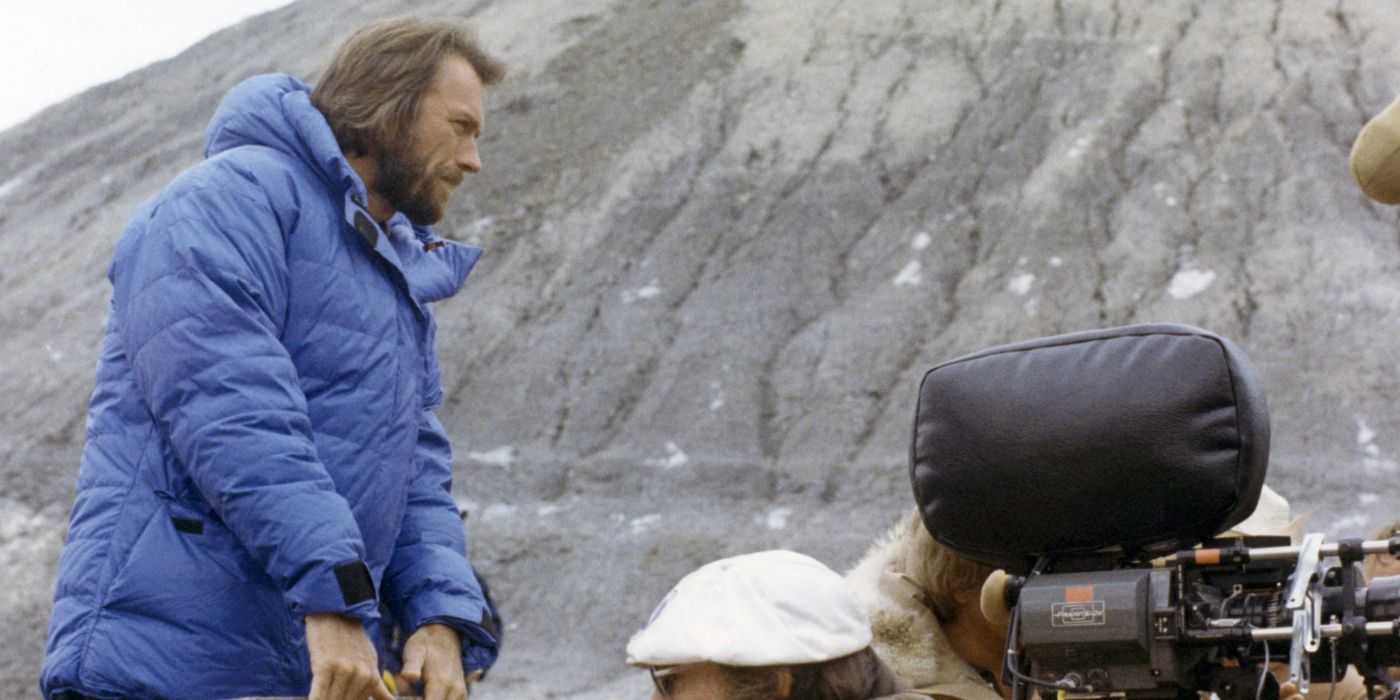
Beyond the thematic crux of the story, Eastwood’s film is visually rendered like a combat picture. The cinematography of Bruce Surtees, a frequent collaborator of Eastwood, and his filmmaking mentor, Don Siegel, shoots the Western vistas and rural villages with a distinct grain. The weathered landscapes of Missouri, Kansas, and the U.S.-Mexico border are antithetical to the glossy, painterly images created by John Ford, the definitive visionary of Western iconography. The gritty visual aesthetic is complemented by the direction of action sequences, which are stripped away of the elegance of a pistol duel in classic Westerns. The fast cuts and unstable camera movements create the sensation of being in the middle of an intense military clash.
In the film, Union and Confederate armies are equipped with advanced weaponry, including a Gatling gun that Wales used to attack the opposing soldiers during the Confederacy’s surrender. Wales operates as a military tactician, methodically executing schemes such as shooting off a rope that is attached to a Union vessel, subsequently trapping them in the middle of a body of water, or creating a diversion by placing a corpse on top of a riding horse to draw out soldiers at a camp. Eastwood’s proclamation to the WSJ that war brings out the most ingenious qualities in humans was clearly practiced when directing Josey Wales.
Violence Is an Inevitability in ‘The Outlaw Josey Wales’
Eastwood’s films, from his brash, free-spirited vigilante characters (notably “Dirty” Harry Callahan) and his experience in the Western genre, are loosely connected to his libertarian politics. Even in the scenarios where he plays a law enforcement official, his characters are proudly anti-government. In The Outlaw Josey Wales, Eastwood struggles to uphold his identity as a lone wolf. When Wales embarks on his quest following the encounter with Lone Watie and Little Moonlight, he says to them, “Might as well ride along with us. Hell, everybody else is.”
The powers of the military-industrial complex limit his independence. This is an especially noteworthy thematic trait because of the film’s genre. Westerns are about open fields and conquering uninhabited and non-industrialized lands. The climactic battle between Wales and Terrill takes place outside a fortified ranch where the outlaw’s companions take shelter. A settlement that should present itself with tranquility is shattered by the carnage of warfare between Wales’ pact and Terrill’s army.
Eastwood’s quote in the Wall Street Journal story informs an inevitability surrounding America’s reckless involvement in war activity. Regardless of one’s desire for bloody vengeance, warfare is destined to hit the American homefront. “Sometimes trouble just follows a man,” Wales reckons before riding off to battle. Viewers may interpret this line as a moment of self-reflection or obliviousness on the character’s part. It carries the weight of Western myths while signaling the pathos of violence that Eastwood strives to connect with in his direction. The oppressive nature of Wales’ violent plight is primarily self-inflicted, as he is not a pure hero in this story, but it complements his relationship with Native American people. Far more effectively than even the greatest Westerns in history, Josey Wales‘ depictions of Native Americans are quite sympathetic, as the titular character takes solace in their oppression by the American government.
‘The Outlaw Josey Wales’ Is Reminiscent of John Ford’s ‘The Searchers’
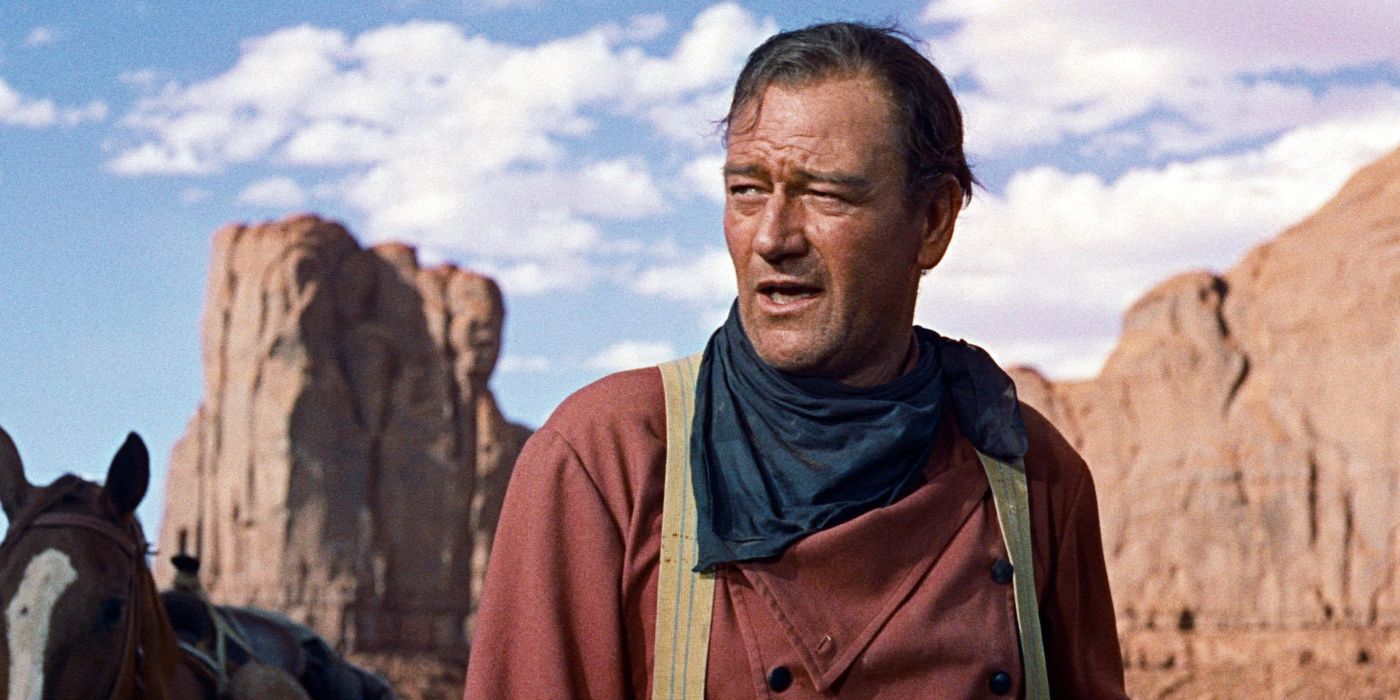
The beauty of the Western genre is that each film, to varying degrees, is reflective of other films in the canon. As for The Outlaw Josey Wales, the mediation on the waning sense of nobility when carrying out justice belongs to the spirit of John Ford’s greatest achievements. The DNA of Sergio Leone‘s Dollars trilogy starring Eastwood is also evident in the 1976 film. Furthermore, Eastwood’s widely recognized revisionist Western masterpiece Unforgiven, can be interpreted as a spiritual successor to Josey Wales.
Like every Western that arrived in its wake, the film is indebted to Ford’s The Searchers, just on the merit of Josey Wales‘ closing line alone. Before riding off into the sunset, Wales, after overhearing Fletcher (John Vernon) enlightening a pair of Texas Rangers about the story of the outlaw’s (who is believed to be dead) trail of vengeance, remarks “I guess we all died a little in that damned war.” As a film released just one year following the end of the Vietnam War, this line unabashedly conveys the gloomy American sentiment of the period.
In The Searchers, Ethan Edwards (John Wayne) returns from the Civil War as a broken soul, and resorts to savage retribution against a Native American tribe. In his worldview, the war never ended. For Josey Wales, a once average American, combat is a rudimentary facet of life. Even if his past traumas are healed, he will always encounter violence along the way.
The Outlaw Josey Wales is available to rent on Prime Video in the U.S.
You may like
Clint Eastwood
Mystic River: Why Clint Eastwood’s Best Movie Still Holds Up Today

A filmmaker of Clint Eastwood‘s caliber is going to have a filmography full of gems. Primarily known for his work in Westerns, biopics, and military dramas, every so often, Eastwood steps outside his comfort zone and delivers in a genre that would seem completely unexpected on paper. That happened in 2003 with Mystic River, a neo-noir murder mystery drama that seems a bit forgotten or overlooked, even though it was a financial success and earned six Academy Award nominations. It represents Eastwood at his very best, breathing vivid life into complex characters as he examines a plethora of themes that range from loyalty, friendship, revenge, and, ultimately, forgiveness.

Mystic River is based on the 2001 novel of the same name by Dennis Lehane, and it follows the lives of three childhood friends, Jimmy Markum (Sean Penn), Sean Devine (Kevin Bacon), and Dave Boyle (Tim Robbins), living in Charlestown, Boston in 1975. Dave is kidnapped by two men claiming to be police officers, and he’s sexually abused by them over a four-day period until he escapes. The traumatic event shapes the three friends, and they ultimately lead very different lives twenty-five years later.
Jimmy is an ex-con that now owns a convenience store in the neighborhood, Sean works for the Massachusetts State Police as a detective, and Dave is your everyday blue-collar worker that still lives with the trauma of being abducted and raped. Their lives are forced together once again through tragedy when Jimmy’s daughter Katie (Emmy Rossum) is found murdered, and friendship is tested when all signs point to Dave being the murderer.
Mystic River Is a Departure From Clint Eastwood’s Other Work
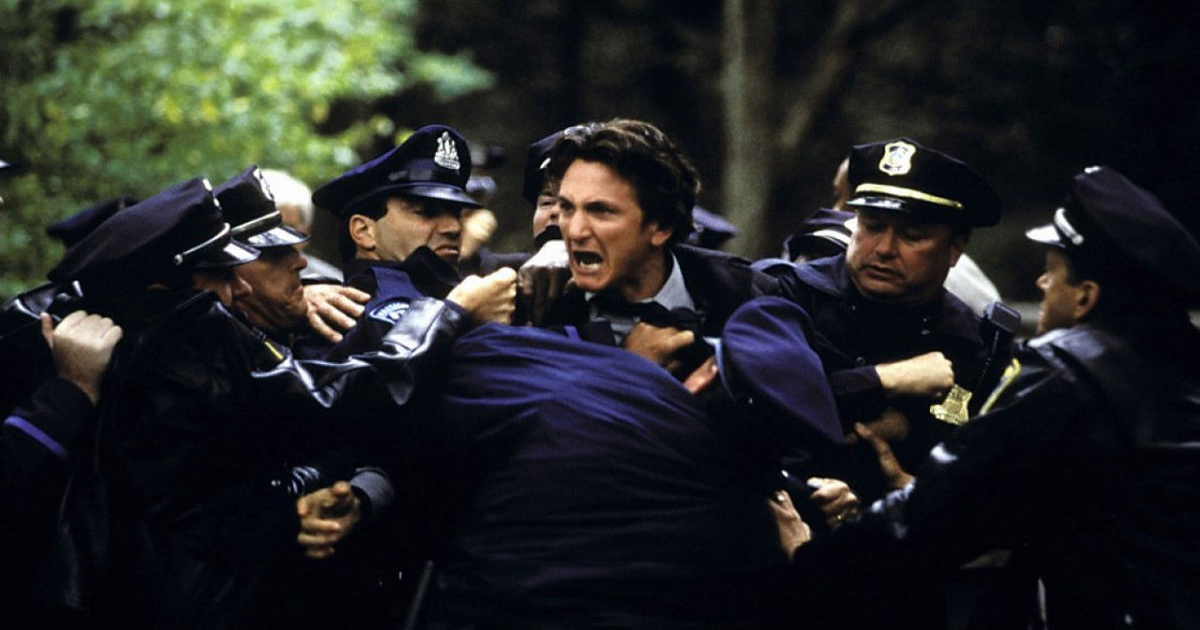
Eastwood tackles the material in Mystic River with a sure and confident hand. It also represents a unique departure from some of his other films. Much of the action takes place under the cover of darkness, and Eastwood is able to find beauty in that darkness. The filmmaker focuses on a character’s eyes or the gleam of a weapon, for instance, as darkness permeates most of the scene.
For the scenes that take place during the day, the filmmaker opts for tight close-ups that linger over the emotions of his impressive cast. There is something uncomfortably intimate about Mystic River, and that has much to do with the subject matter. None of this story is particularly easy to digest, and Eastwood adds to that discomfort with his choices to frame scenes in such a way that’s almost intrusive. The audience feels a growing sense of dread and tension as more of the story unfolds.
Using Lehane’s novel and Brian Helgeland’s screenplay as a blueprint, Eastwood profoundly explores generational trauma and how the sins of the past can leave a permanent mark on our present. Even though the abuse only happened to Dave, the effects of the event leave a mark on all three friends, with Dave being the primary victim and the others feeling a sense of survivor’s guilt for not being subjected to it themselves.
The ordeal forever changes their union because they’re never quite able to look at each other the same way again, as each friend deals with the trauma differently. Jimmy is stunned by the act of abuse but can’t give Dave the support he needs, which then bleeds into their present when Jimmy begins to suspect that Dave had something to do with his daughter’s murder. He doesn’t want to consider that his friend would do something like this because of the trauma he endured as a child, but as evidence mounts against him, Jimmy has to decide if friendship and loyalty overshadow his need for vigilante justice. The story is rich with so many complexities that make it some of Eastwood’s most compelling work as a filmmaker.
Eastwood also takes his time with the story and lets it unfold as it should. Mystic River is very nuanced, and he knows he’s dealing with heartbreaking subject matter that requires patience and respect. The story is grounded in so much reality that Eastwood seems keenly aware that a viewer might be an actual victim of this kind of abuse themselves, so he delicately approaches the topic and gives it the emotional weight it deserves.
He also shows the uncomfortable side of abuse where the victim, unfortunately, can be shamed because of the event. Dave becomes an outsider later in his life, even with his close friends, something that sadly comes along with this kind of trauma. Eastwood approaches all of this responsibly and provides a very balanced outlook to all the events transpiring on screen.
Mystic River has become known for its powerhouse performances, and Eastwood pulls the very best from his ensemble cast. While the scenes with the young actors are brief in the beginning, they set the tone of who these people will be twenty-five years later. Dave becomes the outcast because of the event; Jimmy lacks empathy and doesn’t trust authority, while Sean becomes the grounded one of the bunch and a police officer in an attempt to prevent a tragedy like this from ever happening again.
Clint Eastwood Pulls Powerhouse Performances From His Cast
Tim Robbins, Sean Penn, and Kevin Bacon do a great job conveying the unspoken tension between all three of these characters. There is a sense of loyalty, but so much has taken place over the years that it has forced them all to lead very different lives. As a group, they are uniformly excellent. You feel the history between the characters and the bonds that were broken, only to be reopened by a new traumatic event.
On their own, Penn gives the performance of a lifetime as Jimmy, and it’s not a shock that this turn finally earned him his first Academy Award for Best Actor. Penn is a dominant presence in all of his scenes, and there is a sense of uncertainty whenever he’s around because you don’t know exactly what move he will make.
That’s not to say he doesn’t display layers. All of that bravado is broken once he finds out his daughter is murdered. It’s hard to pinpoint a director’s best scene on film, but what Eastwood pulls out of Penn during the “Is that my daughter?” sequence represents some of his very best work as a filmmaker.
Robbins also received an Academy Award for Best Supporting Actor for his work here, representing a much-deserved win. As Dave, Robbins is the tragic and emotional heart of the story. The viewer feels instant empathy for Dave due to what he went through as a child, but you’re also left questioning everything when it seems like Dave could be the one who murdered Katie.
Robbins keeps you on your toes throughout, making you question his innocence while also seeing the tenderness in him as he interacts with his own child, who is just about the age he was when he was abused. As for Bacon, of the three male leads, he gives the most subdued performance, but it suits the character. He’s trying to make everything right and keep it all together. It’s a subtle performance that carries its own emotional weight.
Eastwood also makes the supporting roles worthy of attention. Marcia Gay Harding, as Dave’s wife Celeste, puts in powerful work here that earned her a Best Supporting Actress Oscar nomination, while Laura Linney more than holds her own with Penn as his second wife, Annabeth. In addition, Laurence Fishburne also fills in as Sgt. Whitey Powers in another excellent part.
Mystic River is a haunting and poetic motion picture that showcases a director laying it all out on the table. Eastwood gives the audience everything he has as a director and pours it out across the screen in a film that is just as powerful twenty years after its initial release.
Clint Eastwood
Clint Eastwood’s Most Iconic Non-Western Role Was Only Possible Because Of This Actor

SUMMARY
Clint Eastwood’s role in Dirty Harry is considered one of his most iconic, and the film is a classic in the crime genre.
Paul Newman initially turned down the role of Harry Callahan in Dirty Harry but recommended Clint Eastwood for the part.
Newman declined the role due to his liberal beliefs, and Eastwood’s portrayal of Callahan differed from Newman’s perspective, but both respected each other.
SCREENRANT VIDEO OF THE DAY

Although Clint Eastwood first built his impressive career on Western movies like The Man with No Name franchise and The Outlaw Josey Wales, the actor’s biggest non-Western role in Dirty Harry is one of his most iconic, and it might have never happened without this one actor. Clint Eastwood began acting in the 1950s, and over several decades, became a staple in the Western genre. What makes Eastwood stand out is the fact that he has not only appeared in countless films, but has also directed them himself. Films like Unforgiven and Gran Torino have defined his career. However, Dirty Harry is by far one of Clint Eastwood’s best films.
In 1971, Clint Eastwood starred in the neo-noir action film Dirty Harry. The film, and its adjoining sequels, follow Inspector “Dirty” Harry Callahan, a rugged detective that is on a hunt for a psychopathic serial killer named Scorpio. The Dirty Harry franchise lasted from 1971 to 1988, and has since been considered a classic. In fact, Dirty Harry was selected for preservation in the United States National Film Registry by the Library of Congress because of its cultural significance. However, this film might have been vastly different if Clint Eastwood had never been in it, and scarily enough, this definitely could have happened back in 1971.
Paul Newman Rejected Dirty Harry Before Suggesting Clint Eastwood For The Role
Dirty Harry went through many production challenges before it was actually made, and one of those included casting the iconic detective. In the film’s early stages, the role was offered to actors such as John Wayne, Robert Mitchum, Steve McQueen, and Burt Lancaster. However, for various reasons, including the violence that permeates the film, these actors all declined. For a time, Frank Sinatra was attached to the project, but he also eventually left the production. In reality, Clint Eastwood wasn’t even in the cards for portraying Dirty Harry, but his big break came when Paul Newman was offered and declined the role.
Paul Newman, like many amazing actors before him, was offered the role of Harry Callahan, but ultimately said no. However, what makes his refusal stand out among the rest is that he recommended another actor that could be perfect for the role: Clint Eastwood. At this time, Eastwood was in post-production for his first film Play Misty for Me, meaning his career was taking something of a turn. Also, unlike his predecessors, Eastwood joined up with Dirty Harry, just as Newman thought he would. Because of his Western roots, the violence and aggression that made up Dirty Harry didn’t bother Eastwood at all.
Why Paul Newman Turned Down Dirty Harry
Paul Newman turning down the leading role in Dirty Harry may not seem too surprising considering the host of other actors that also declined the movie, but Newman definitely had his reasons. While previous actors had condemned the movie for its incredible violence and themes of “the ends justify the means,” Newman refused to take the role because of his political beliefs. Since Harry Callahan was a renegade cop, intent on catching a serial killer no matter the cost or the rules that would be broken, Newman saw this character as too right-wing for his own liberal beliefs.
Paul Newman was an outspoken liberal during his life. He was open about his beliefs, so much so that he even made it onto Richard Nixon’s enemies list due to his opposition of the Vietnam War. Other issues that Newman spoke out for included gay rights and same-sex marriage, the decrease in production and use of nuclear weapons, and global warming. As a result of his politics, Newman quickly denied the role of Harry Callahan. In an interview with Entertainment Weekly as reported by Far Out Magazine, Clint Eastwood commented that he didn’t view Callahan in the way Newman did, but still respected him as an actor and a man.
Would Dirty Harry Have Been So Successful Without Clint Eastwood?
Ultimately, it’s hard to say whether Dirty Harry would have been successful without Clint Eastwood. Arguably, any big-time actor could have made the film succeed solely based on their fame. However, one aspect of Dirty Harry and its carousel of actors is that the movie had various scripts, all with different plots. So, if Dirty Harry had been in a different location with a different serial killer and a different lead actor, there’s a chance it wouldn’t have been nearly as successful. In the end, Dirty Harry is a signature for Clint Eastwood, and most likely, audiences are lucky that it was made the way it was.
Clint Eastwood
The story of how Clint Eastwood prevented Ron Howard from embarrassment

A star of American cinema both in front of and behind the camera, Ron Howard is often forgotten when recalling the greatest directors of modern cinema, yet his contributions to the art form remain unmatched. Working with the likes of Tom Hanks, Chris Hemsworth, Russell Crowe and John Wayne, Howard has brought such classics as Apollo 13, A Beautiful Mind and Rush to the big screen.
Entering the industry in the late 1950s and 1960s, Howard started his career as an actor, making a name for himself in shows like Just Dennis and The Andy Griffith Show before his role in 1970s Happy Days would catapult him to national acclaim. His directorial debut would come at a similar time, helming 1977’s Grand Theft Auto, the ropey first movie in a filmography that would later become known for its abundance of quality.
Known for his acting talents, Howard wouldn’t become a fully-fledged director in the eyes of the general public until the 1980s, when he worked with Tom Hanks on 1984’s Splash and George Lucas for the 1988 cult favourite Willow.
With hopes of becoming the new Star Wars, Willow was instead a peculiar fantasy tale that told the story of a young farmer who is chosen to undertake the challenge to protect a magical baby from an evil queen. Starring the likes of Warwick Davis, Val Kilmer and Joanne Whalley, the film failed to make a considerable dent in pop culture at the time, largely being ridiculed by critics and audiences alike.
Screened at the Cannes Film Festival, the movie was spared humiliation by none other than Clint Eastwood, who saw the craftsmanship behind the picture, as described by Ron’s daughter, Bryce Dallas Howard.
Speaking to Daily Mail, the actor recalled: “My dad made a film called Willow when he was a young filmmaker, which screened at the Cannes Film Festival and people were booing afterwards. It was obviously so painful for him, and Clint, who he didn’t know at that time, stood up and gave him a standing ovation and then everyone else stood up because Clint did”.
Dallas Howard, who worked with Eastwood on the 2010 movie Hereafter, became very fond of Eastwood as a result, looking up to him as an exemplary Hollywood talent. “Clint puts himself out there for people,” she added, “As a director he is very cool, very relaxed, there’s no yelling ‘action’ or ‘cut’. He just says: ‘You know when you’re ready.’ I told my dad he should do that!”.
Take a look at the trailer for Howard’s 1988 fantasy flick below.
Trending
-

 Entertainment10 months ago
Entertainment10 months agoJohn Wayne’s son speaks on military service, Hollywood life and his dad, ‘The Duke’ – My Blog
-

 Entertainment10 months ago
Entertainment10 months ago40 Legendary John Wayne Quotes – My Blog
-

 Entertainment11 months ago
Entertainment11 months agoNew biography reveals the real John Wayne – My Blog
-

 Entertainment1 year ago
Entertainment1 year agoWhy one POPULAR ACTOR was FIRED from THE SONS OF KATIE ELDER and lost his career as a result! – Old western – My Blog
-

 Entertainment10 months ago
Entertainment10 months agoHow Maureen O’Hara Broke Her Hand During Iconic Scene With John Wayne – My Blog
-

 Entertainment11 months ago
Entertainment11 months agoRio Lobo (1970) marked the last collaboration between John Wayne and Howard Hawks. – My Blog
-

 Entertainment11 months ago
Entertainment11 months agoDid John Wayne really have a good time filming 1972’s The Cowboys? – My Blog
-

 Entertainment10 months ago
Entertainment10 months agoJohn Wayne and the ‘Bonanza’ Cast Appeared in This Epic Coors Light Commercial – My Blog

